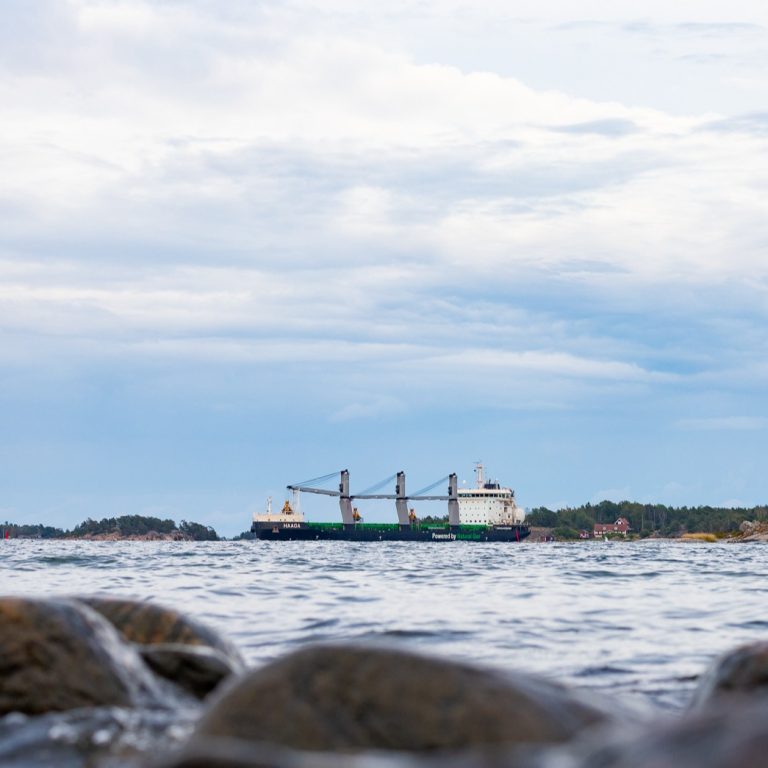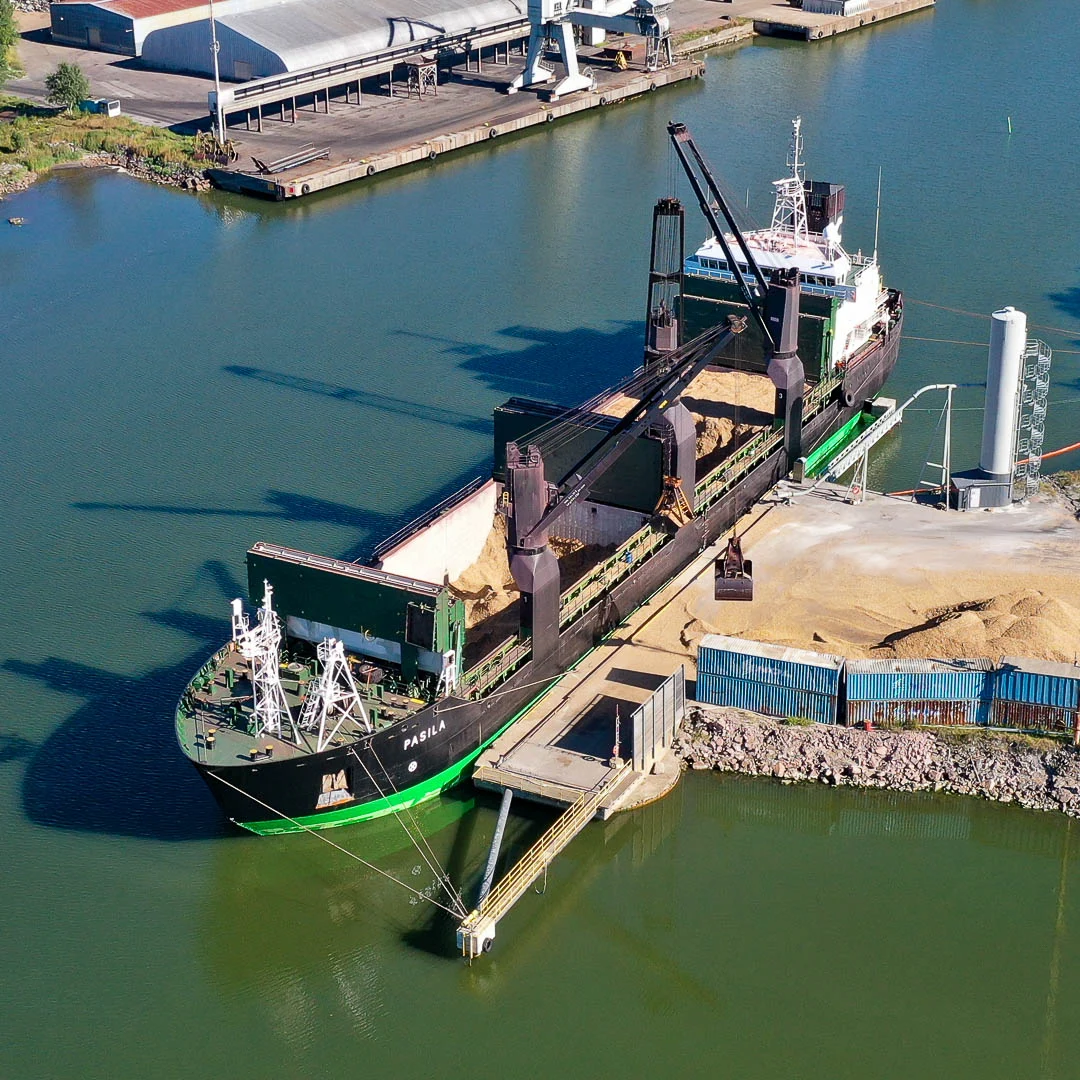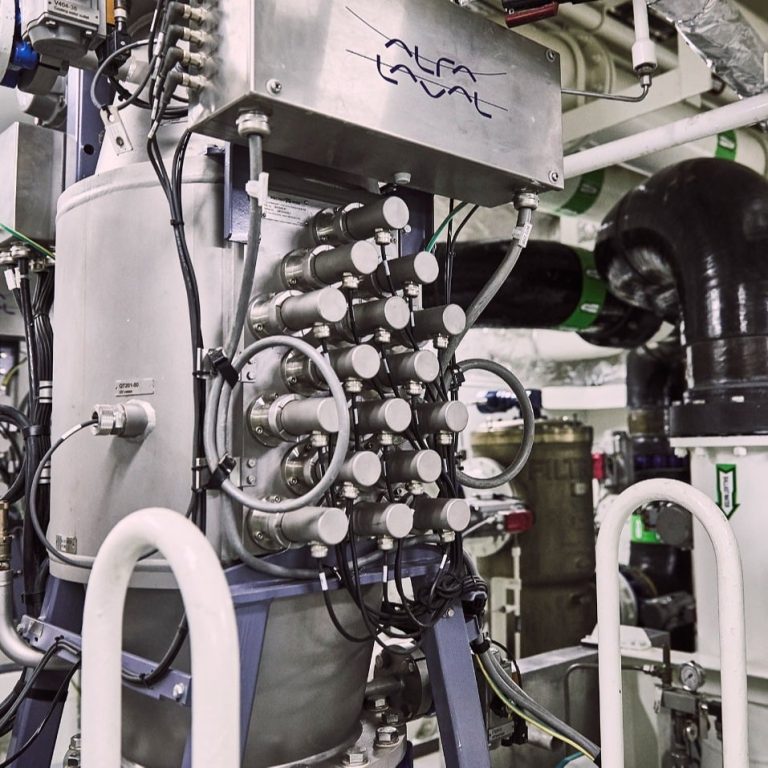
Larger vessel reduces emissions per cargo ton
A ship is the most environmentally friendly alternative for transporting large quantities of cargo. For instance, one Eira-size 20,000 dwt vessel is the equivalent of around 1,100 trucks with cargo capacity of 18 tons. In general, smaller vessels consume more energy for the same transport work. The consumption per cargo ton transported with a coaster is on average three times higher than on our LNG powered vessels Viikki and Haaga. One of the easiest ways to decrease carbon footprint is the use of bigger ships and to slow down their speed. However, it must be recognized that this is not possible for all of our clients and industries due to lot sizes and restrictions in harbours. Smaller parcels will be shipped and small vessels will be trading also in the future. In order to provide environmentally superior alternative in the smaller vessel class, we are currently building twelve new, extremely energy efficient 5,350 dwt plug-in hybrid vessels which will join AtoB@C Shipping's fleet from Q3/2023 onwards.



